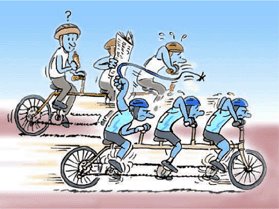MONDAY, April 17 (HealthDay News) -- Society's oldest members are most likely to be born to its youngest mothers, new research suggests.
The odds of living to 100 and beyond double when a person is born to a woman under 25 years of age, compared to those people born to older mothers, according to one of the most rigorous studies on the subject yet conducted.
The finding may also help clear up a statistical mystery -- three years ago, the same husband-and-wife team of researchers found that being the first-born child in a family also boosted longevity, although no one knew why.
"It turns out that the whole phenomenon of first-born order and longevity is driven by young maternal age," said study co-author Leonid Gavrilov, a research associate at the Center on Aging at the University of Chicago.
In other words, he said, first-born children are simply more likely than their siblings to have been born when mom was in her teens or early 20s.
The study, which was funded by the U.S. National Institute on Aging (NIA) and the Society of Actuaries, was presented recently at the Population Association of America annual meeting, in Los Angeles.
As nutrition and health care continue to improve, so too does the number of Americans whose years extend into the triple-digits.
"Certainly there were more [centenarians] in the 2000 census than there were in 1990, and most people think this population will grow," said Georgeanne Patmios, acting chief of the Population and Social Processes Branch of the NIA's Behavioral and Social Research Program.
According to the Census Bureau, there were 37,000 Americans aged 100 years or older in 1990, and by 2000 that population had risen to 55,000. According to experts, women are three to five times more likely to live beyond 100 than men.
But what other factors encourage "extreme" old age? Previous research by Gavrilov and his wife/co-researcher, Natalia Gavrilova, has uncovered some clues. For example, in research published over the past few years, they found that U.S. centenarians were more likely to come from farming families in the Midwest than from any other demographic.
They also discovered that being the first-born in a family meant a lot, boosting the odds of making it to 100 by nearly 80 percent.
"But nobody knew why that was -- sometimes in research you get answers, but you also get new questions," Gavrilov said.
So, he and his wife set out to solve that puzzle. They selected 198 centenarians from across the United States, checking and double-checking their ages using every form of documentation available. Comparing the centenarians' histories to those of their siblings, the researchers then analyzed the data to help explain the "first-born effect."
One theory -- that first-born children might have been relatively protected from pediatric illness because they weren't surrounded by disease-bearing siblings in infancy -- didn't pan out. "We found that even at age 75 it still matters that one is first-born," Gavrilov said. "It's a late-life phenomenon."
A second theory -- that first-born kids reaped the benefit of a relatively young, strong and productive father -- also fell flat. "We got the very clear result that the father's age wasn't important," the Chicago researcher said.
That wasn't the case for mothers. In fact, statistical analysis revealed that young maternal age at birth completely accounted for the first-born effect.
"It is very rare in science that you have such clear-cut results. But here, when we saw the results, we went 'Wow,'" Gavrilov said. Overall, children born to an under-25 mother had double the odds of living to 100 and beyond, compared to offspring of women who delivered at a later age.
So, why do young moms tend to bear more long-lived children? "At this point all we have is hypotheses," Gavrilov said. "One is biological -- that maybe the eggs are different in their quality, and the best ones, the most vigorous eggs, go first to fertilization."
He said his wife Natalia came up with a competing theory: That young moms haven't had time to pick up the latent, chronic infections that might in some way impede the long-term health of their offspring. "This might interfere with normal development," Gavrilov said. "So, when the children are born they are superficially healthy but maybe they are not really strong enough to survive to 100."
Patmios said the question of why younger mothers might bear more resilient offspring remains "open, but it's worthy of additional research." She stressed that it has proven extremely tough to get in-depth, reliable data for events that happened over a century ago. "There are a lot of other factors that probably contribute to exceptional longevity which, given the dataset that Dr. Gavrilov has to use, he can't assess," she said.
And what about the longevity of children born to today's moms, who are often postponing first pregnancy to their 30s or even 40s? According to Gavrilov, advances in diet and health care mean American newborns still have a better chance of living out a century than their great-grandparents did.
"The data shows that there is a steady increase in living to age 100, despite the fact that women are tending to postpone their childbearing years," he said.

